The Grand Canyon stands as nature’s ultimate masterpiece, a testament to the sheer power of geological forces acting over millions of years. This colossal chasm, carved by the persistent flow of the Colorado River, extends 277 miles through northern Arizona, reaching depths of over a mile and spanning up to 18 miles wide in certain sections. As one of America’s most iconic landscapes and Arizona’s premier natural attraction, the Grand Canyon captivates over 5 million visitors annually with its breathtaking vistas, vibrant colors, and dramatic scale that defies comprehension.
Designated as a national park in 1919, Grand Canyon National Park encompasses approximately 1.2 million acres of protected land, preserving not only the canyon itself but also vast stretches of surrounding plateau ecosystems. This UNESCO World Heritage Site represents far more than just a scenic wonder; it serves as a living geological museum, a biodiversity hotspot, and the ancestral homeland to numerous Native American tribes who have maintained deep cultural connections to these landscapes for millennia.
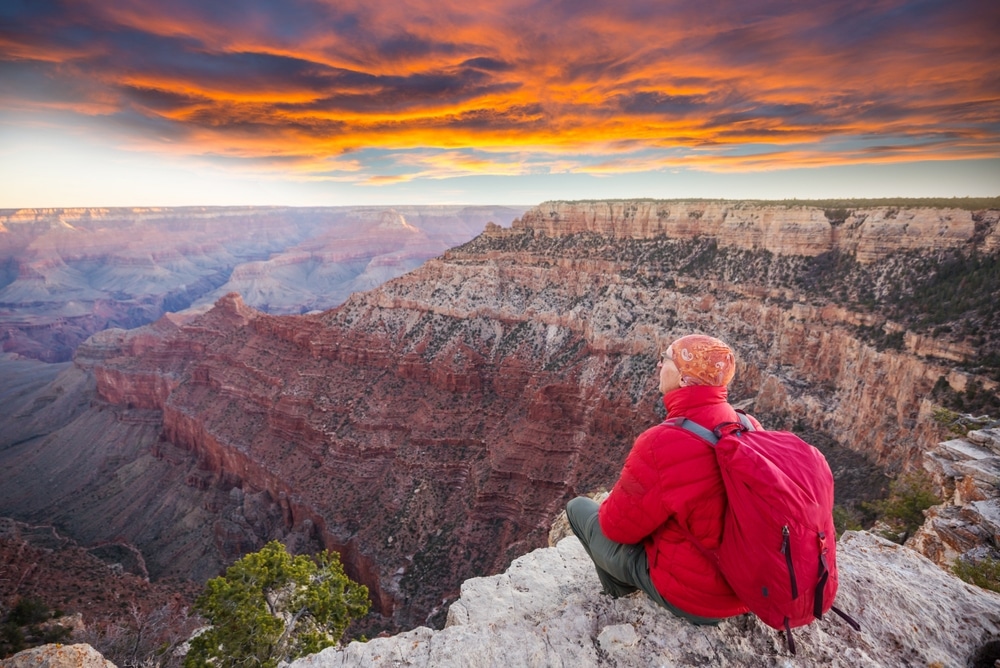
The park’s vast expanse contains evidence of nearly two billion years of Earth’s history exposed in its rock layers, making it one of the most complete geological records visible anywhere on the planet. Within this dynamic environment, visitors can explore diverse ecosystems ranging from riparian zones along the Colorado River to high desert pine forests on the rim, each supporting distinctive plant and animal communities adapted to the extreme conditions of the Arizona wilderness.
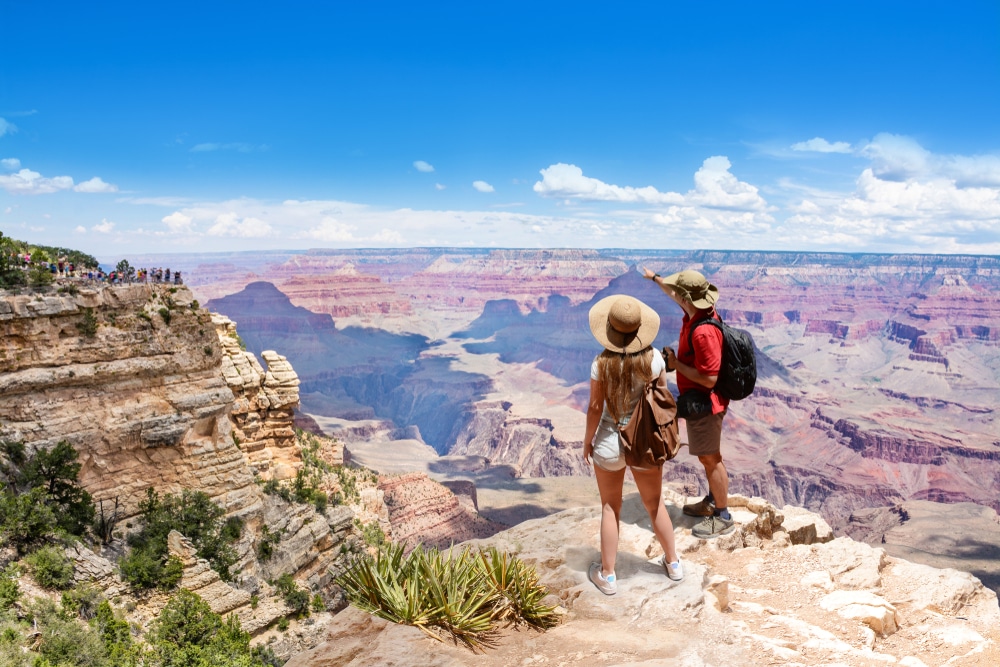

The iconic London Bridge stands as Lake Havasu City’s most famous landmark. Purchased from the City of London in 1968 by Robert McCulloch for $2.46 million, the bridge was meticulously disassembled, transported, and reconstructed over a man-made channel. Today, visitors can walk across this historic structure, explore its English Village shopping area, and learn about its fascinating relocation through interpretive displays and guided tours.

Less visited and open only from mid-May to mid-October, the North Rim sits 1,000 feet higher than the South Rim, offering unique perspectives and cooler temperatures. Bright Angel Point provides dramatic views just a short walk from the visitor center. Point Imperial, the highest viewpoint at 8,803 feet, showcases the eastern canyon and Painted Desert. Cape Royal offers panoramic vistas including Angels Window, a natural arch that frames the Colorado River.

The canyon features trails for all ability levels. Rim trails offer easy, paved walking with stunning views. The popular Bright Angel Trail and South Kaibab Trail descend into the canyon, allowing day hikers to experience changing ecosystems and rock formations. The challenging Rim-to-Rim hike traverses 24 miles from the North Rim to South Rim, requiring excellent fitness and careful planning. All inner canyon hikes demand proper preparation for extreme temperature variations and limited water sources.

Anglers flock to Lake Havasu for its abundant fish populations, including smallmouth and largemouth bass, striped bass, catfish, and panfish. The lake holds numerous fishing tournaments throughout the year, including professional bass competitions. Fishing is productive year-round, with different species peaking in different seasons. The Bill Williams River National Wildlife Refuge at the lake’s south end offers particularly productive fishing in a serene setting.

Navigating the Colorado River through the Grand Canyon offers an incomparable perspective from the canyon floor. Commercial trips range from one-day sections to three-week expeditions covering the entire 277-mile canyon stretch. Rapids range from gentle ripples to the formidable Crystal and Lava Falls. Private permits are distributed through a lottery system, with waiting periods often extending several years. These journeys provide access to side canyons, waterfalls, and archaeological sites inaccessible by other means.

The diverse ecosystems support remarkable wildlife viewing opportunities. California condors, with their impressive 9-foot wingspan, can often be spotted soaring along rim areas. Desert bighorn sheep navigate the steep canyon walls, while mule deer frequently appear in forested regions. The North Rim’s meadows host the only bison herd in Arizona. Dawn and dusk provide optimal wildlife viewing times, particularly at less crowded viewpoints.
The lake area serves as habitat for diverse desert wildlife including bighorn sheep, coyotes, roadrunners, and various reptiles. The Havasu National Wildlife Refuge protects critical habitat along the Colorado River, offering excellent birdwatching opportunities. The Havasu Springs area features natural thermal springs where various species gather, especially during cooler months.

Traditional mule trips have operated since the 1880s, offering unique canyon experiences for visitors. South Rim options include a 3-hour ride along the rim and overnight trips to Phantom Ranch at the canyon bottom. The North Rim features half-day rides into the upper portions of the canyon. These guided journeys provide historical commentary and stunning viewpoints while the sure-footed mules navigate the steep terrain. Advanced reservations are essential, often filling up 13 months ahead.

The Grand Canyon offers diverse overnight accommodations catering to various preferences and budgets:
Developed Campgrounds: The South Rim’s Mather Campground and North Rim Campground provide tent and RV sites with basic amenities including restrooms, drinking water, and fire rings. Trailer Village on the South Rim offers full RV hookups. All developed campgrounds require reservations well in advance, particularly during peak seasons.
Backcountry Camping: Permits are required for all overnight stays in the canyon’s backcountry, with designated camping areas at Bright Angel Campground near Phantom Ranch, Indian Garden Campground on the Bright Angel Trail, and numerous primitive camping zones throughout the park’s undeveloped wilderness.
Lodging: Historic accommodations include:
Reservations for all park accommodations should be made 6-12 months in advance due to extremely high demand, particularly during summer months and holiday periods.
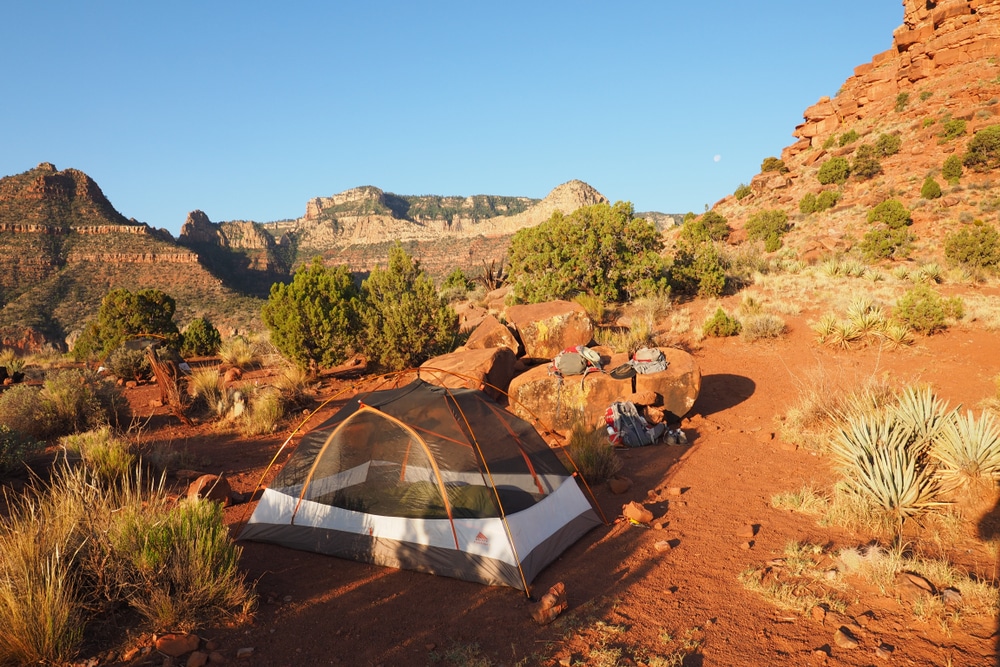
The Grand Canyon offers some of America’s most iconic hiking experiences, with trails ranging from leisurely rim walks to challenging multi-day backcountry adventures. Popular hiking options include:
Rim Trails: The South Rim Trail extends for 13 miles along the canyon edge, offering numerous viewpoints and interpretive exhibits with sections that are paved and wheelchair accessible. The North Rim’s Bright Angel Point Trail and Cape Royal Trail provide stunning vistas with minimal elevation change.
Corridor Trails: The park’s most popular and well-maintained routes into the canyon include:
Backcountry Routes: For experienced hikers, challenging trails like the Tonto, Hermit, and Grandview provide access to more remote areas of the canyon with fewer crowds but require advanced preparation and navigation skills.
Important hiking considerations include:
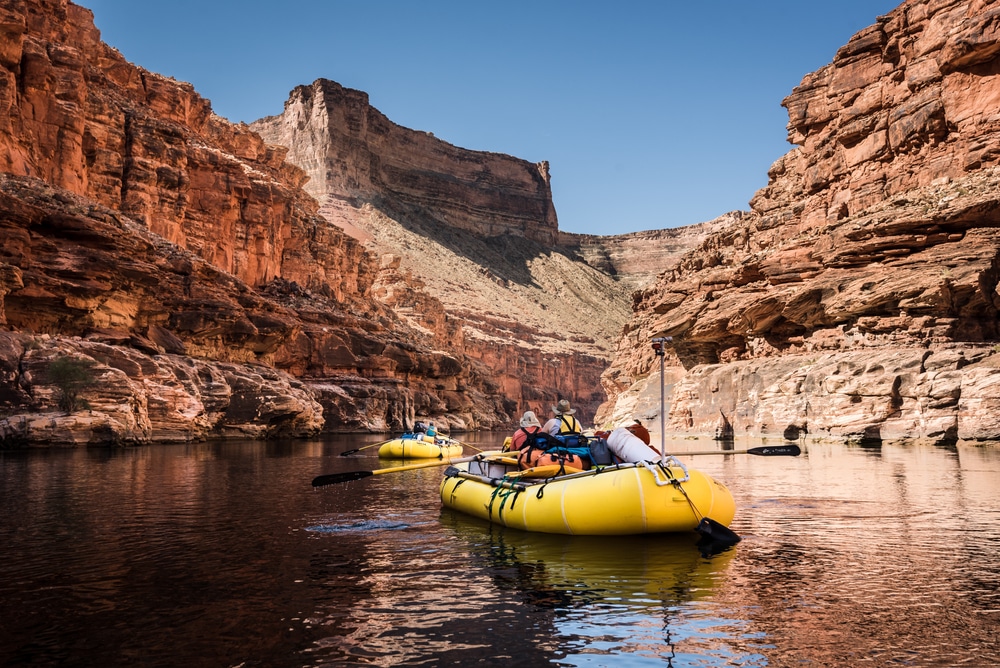
The Colorado River offers world-class whitewater rafting through the heart of the Grand Canyon, with trips ranging from one-day partial canyon experiences to comprehensive 21-day journeys covering the entire 277-mile stretch from Lees Ferry to Lake Mead.
River trips provide a unique perspective of the canyon from the bottom up, accessing remote side canyons, waterfalls, and archaeological sites unreachable by other means. Visitors can choose between:
The river corridor features numbered campsites with composting toilets but no other facilities, requiring all groups to be entirely self-sufficient and practice strict Leave No Trace principles.
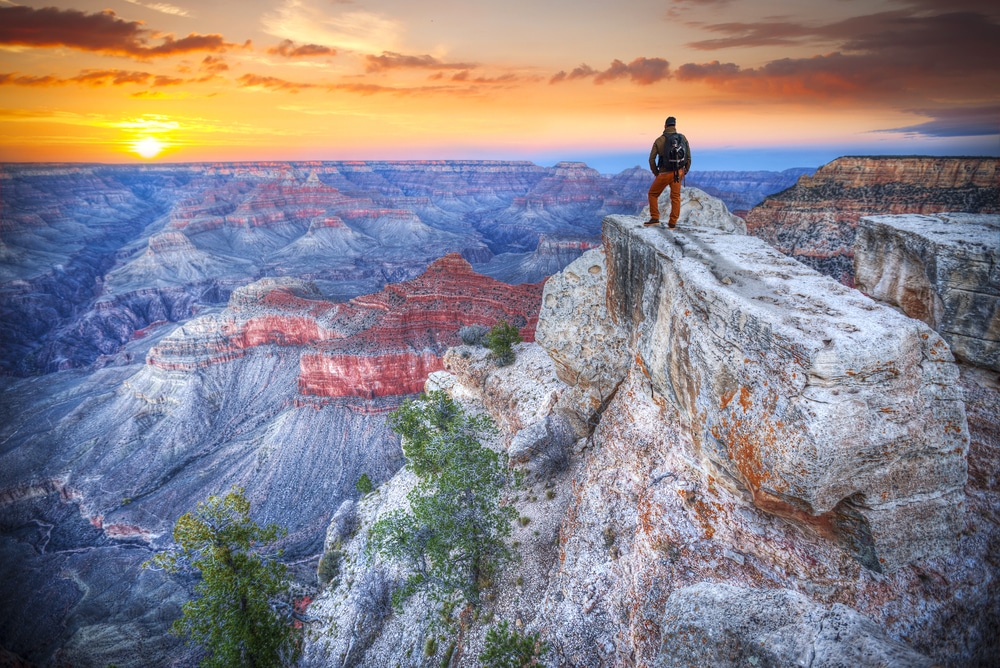
For visitors with limited time or mobility, scenic drives along both rims provide access to spectacular viewpoints:
South Rim: Desert View Drive extends 25 miles east from Grand Canyon Village to Desert View, featuring numerous pullouts and overlooks including Grandview Point, Moran Point, and Lipan Point. The village area itself offers iconic views from Mather Point, Yavapai Point, and Hopi Point, the latter being particularly renowned for sunset viewing.
North Rim: The scenic Cape Royal Road winds through forests to several dramatic overlooks, including Point Imperial (the highest point on either rim at 8,803 feet) and Angels Window, a natural stone arch framing a view of the Colorado River below.
Each viewpoint offers a distinct perspective of the canyon’s vast dimensions and intricate formations, making a progression of stops worthwhile even for those who cannot undertake more strenuous activities.
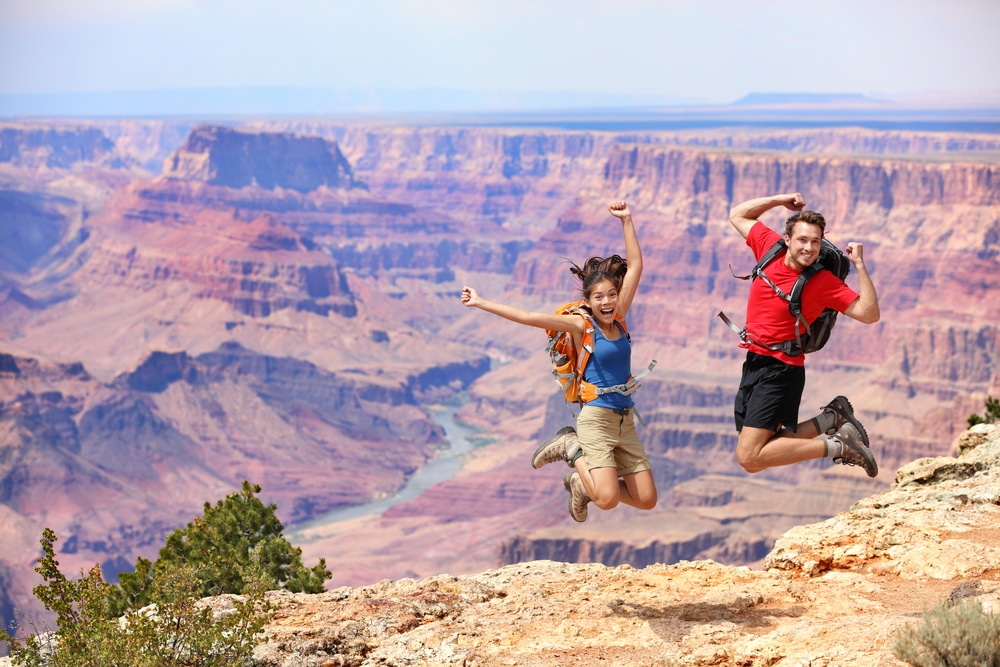
The Grand Canyon provides exceptional wildlife viewing and photography opportunities throughout the year:
Photography enthusiasts particularly value:
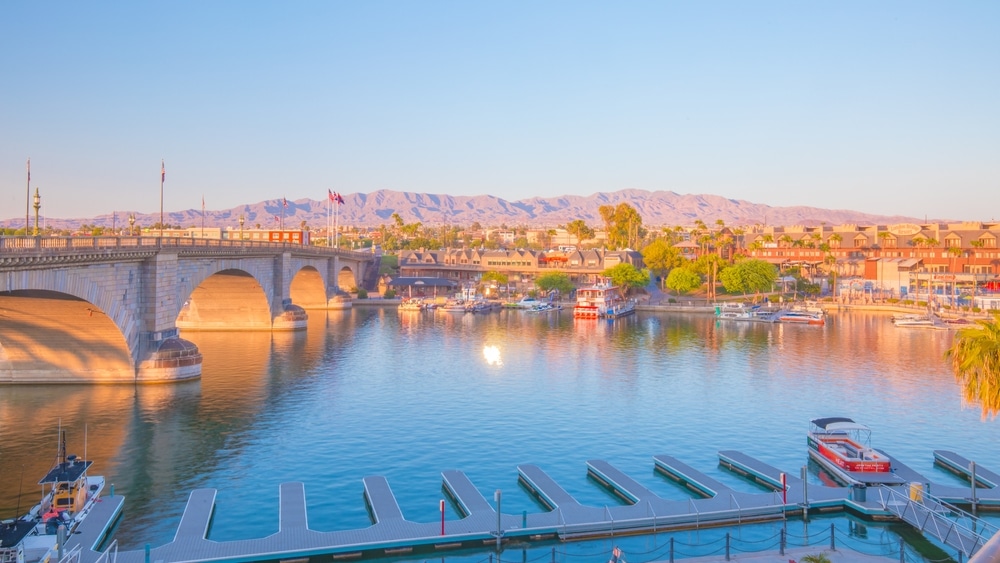
| Feature | Details |
|---|---|
| Location | Arizona, United States |
| Established | February 26, 1919 (National Park), 1908 (National Monument) |
| Size | 1,218,375 acres (4,931 km²) |
| Annual Visitors | Approximately 4.5 million |
| UNESCO Status | World Heritage Site (1979) |
| Geological Features | Canyon carved by Colorado River, exposed rock layers spanning 2 billion years of Earth’s history |
| Canyon Dimensions | Length: 277 miles (446 km)<br>Width: 4-18 miles (6.4-29 km)<br>Depth: Up to 6,000 feet (1,829 m) |
| Major Viewpoints | South Rim: Mather Point, Yavapai Point, Desert View<br>North Rim: Bright Angel Point, Cape Royal, Point Imperial |
| Climate | South Rim: High desert climate with four seasons<br>North Rim: Higher elevation, cooler temperatures, closed in winter |
| Activities | Hiking, rafting, helicopter tours, mule rides, camping, stargazing |
| Popular Trails | Bright Angel Trail, South Kaibab Trail, North Kaibab Trail, Rim Trail |
| Vegetation Zones | Five distinct ecological zones from desert scrub to subalpine forest |
| Wildlife | 447 bird species, 91 mammal species, 58 reptile and amphibian species |
| Indigenous History | Ancestral home to multiple Native American tribes including Havasupai, Hualapai, Navajo, and Hopi |
| Visitor Facilities | Lodges, campgrounds, visitor centers, museums, restaurants |
| Best Time to Visit | Spring (March-May) and Fall (September-October) |
| Nearest Cities | Flagstaff, AZ (80 miles), Las Vegas, NV (275 miles), Phoenix, AZ (230 miles) |
Grand Canyon National Park is situated in northern Arizona, approximately 80 miles northwest of Flagstaff. The park is divided into two primary visitation areas: the South Rim and the North Rim, which, despite being only about 10 miles apart as the crow flies, require a 215-mile drive to travel between them due to the canyon’s immense size.
The South Rim, located at an elevation of approximately 7,000 feet, remains the park’s most accessible and visited section. It’s open year-round and houses the majority of visitor services and facilities. In contrast, the North Rim sits at a higher elevation of around 8,000 feet and experiences seasonal closures due to heavy winter snowfall, typically operating only from mid-May through mid-October.
Visitors can access the Grand Canyon through multiple transportation options:
The Grand Canyon’s most compelling feature remains its unparalleled geological showcase, where the Colorado River has exposed nearly two billion years of Earth’s history in its stratified rock layers. This natural cross-section reveals a remarkable timeline of the planet’s development, with each layer representing distinct geological periods, environments, and evolutionary stages.
The canyon walls display a vivid palette of colors—rusty reds, burnt oranges, dusty purples, and earthy browns—each hue representing different mineral compositions and environmental conditions present during rock formation. Prominent geological features include:
Throughout the park, dramatic mesas, buttes, and spires stand as testament to the ongoing erosional processes that continue to shape this dynamic landscape.
Despite its seemingly harsh environment, the Grand Canyon supports remarkable biodiversity across its varied elevations and microclimates. The park encompasses five distinct life zones, from the lower Sonoran desert environment along the Colorado River to the subalpine coniferous forests of the North Rim.
This ecological diversity harbors over 1,500 plant species, 355 bird species, 89 mammal species, 47 reptile species, 9 amphibian species, and 17 fish species. Notable wildlife includes:
The park’s vegetation ranges from drought-resistant cacti and yucca in the lower elevations to ponderosa pine and spruce-fir forests on the rims, creating dramatically different environments within relatively short distances.
For thousands of years, the Grand Canyon region has held profound cultural significance for numerous Native American tribes. Archaeological evidence indicates human presence dating back nearly 12,000 years, with the canyon and surrounding plateaus serving as homeland to the Ancestral Puebloan, Cohonina, and other prehistoric cultural groups.
Today, eleven federally recognized tribes maintain ongoing cultural connections to the Grand Canyon, including the Havasupai, who still reside within the canyon’s boundaries in Havasu Canyon; the Hualapai, who manage the western portion of the canyon as tribal land; and the Navajo Nation, whose reservation borders the park to the east.
Throughout the park, visitors can observe evidence of this rich cultural heritage through:
The Grand Canyon offers several interpretive facilities to enhance visitor understanding:
South Rim:
North Rim:
Grand Canyon Conservancy bookstores operate at both rims, offering educational materials, maps, and souvenirs with proceeds supporting park programs.
All visitor centers provide ranger assistance, trip planning resources, exhibit areas, and accessibility information.
Numerous guided experiences enhance visitor understanding and access:
The park offers varied dining options:
The Grand Canyon experience varies dramatically with the seasons:
Moderate temperatures make this an ideal time for hiking into the canyon, though late-season snowstorms can occasionally affect rim areas. Wildflowers begin blooming, and crowds remain moderate except during spring break periods.
The park’s busiest season brings warm temperatures to the rims (averaging 70-85°F/21-29°C) but extreme heat to the inner canyon, where temperatures regularly exceed 100°F (38°C). Afternoon thunderstorms during monsoon season (July-September) create spectacular photo opportunities but can make trails slippery and pose lightning dangers.
Perhaps the ideal visitation period, with cooler temperatures, reduced crowds after Labor Day, and golden aspen foliage on the North Rim in late September. The North Rim closes facilities in mid-October, though the road remains open until the first significant snowfall.
The South Rim remains open but receives occasional snowfall, creating stunning contrasts against the red canyon walls. Visitor numbers drop significantly, allowing for a more solitary experience, though icy conditions can impact trail safety. The North Rim closes completely to vehicle access from December through mid-May.
Several activities within Grand Canyon National Park require advance planning and permits:
The standard entrance fee ($35 per vehicle in 2025) provides seven-day access to both rims. America the Beautiful passes provide annual access to all national parks for $80.
Required for all overnight stays below the rim, these highly sought-after permits become available four months in advance through the park’s backcountry office. During peak seasons, demand far exceeds availability, particularly for popular areas like Bright Angel Campground.
Commercial river trips can be booked through authorized outfitters, while private river permits are allocated through a weighted lottery system that can require years of application before success.
Required for activities such as wedding ceremonies, commercial filming, research projects, and organized group activities.
The Grand Canyon’s extreme environment requires serious safety precautions:
As visitation continues to increase, conservation challenges facing Grand Canyon National Park include:
Visitors can contribute to conservation efforts by:
The Grand Canyon transcends simple categorization as a scenic attraction. It stands as one of humanity’s shared treasures—a place of profound natural power that simultaneously conveys our planet’s immensity and our own fleeting presence within Earth’s timeline. Whether experienced through a momentary glance from a popular viewpoint or during a weeks-long immersion in its backcountry depths, the canyon inevitably leaves visitors changed, having glimpsed something fundamental about the forces that shape our world.
As we navigate the complex challenges of preserving this landscape while making it accessible to millions of annual visitors, the Grand Canyon continues to inspire wonder and stewardship across generations. Its stark beauty reminds us of our responsibility to ensure that future visitors will experience the same sense of awe when standing at its edge—or deep within its embrace—that has captivated human imagination since time immemorial.
Whether you come seeking adventure, knowledge, spiritual connection, or simply a moment of perspective in our increasingly hectic world, Grand Canyon National Park offers experiences that remain unmatched anywhere on Earth. Plan accordingly, tread lightly, and prepare to be transformed by this colossal testament to geological time and natural processes that continues to deepen—literally and figuratively—with each passing year.